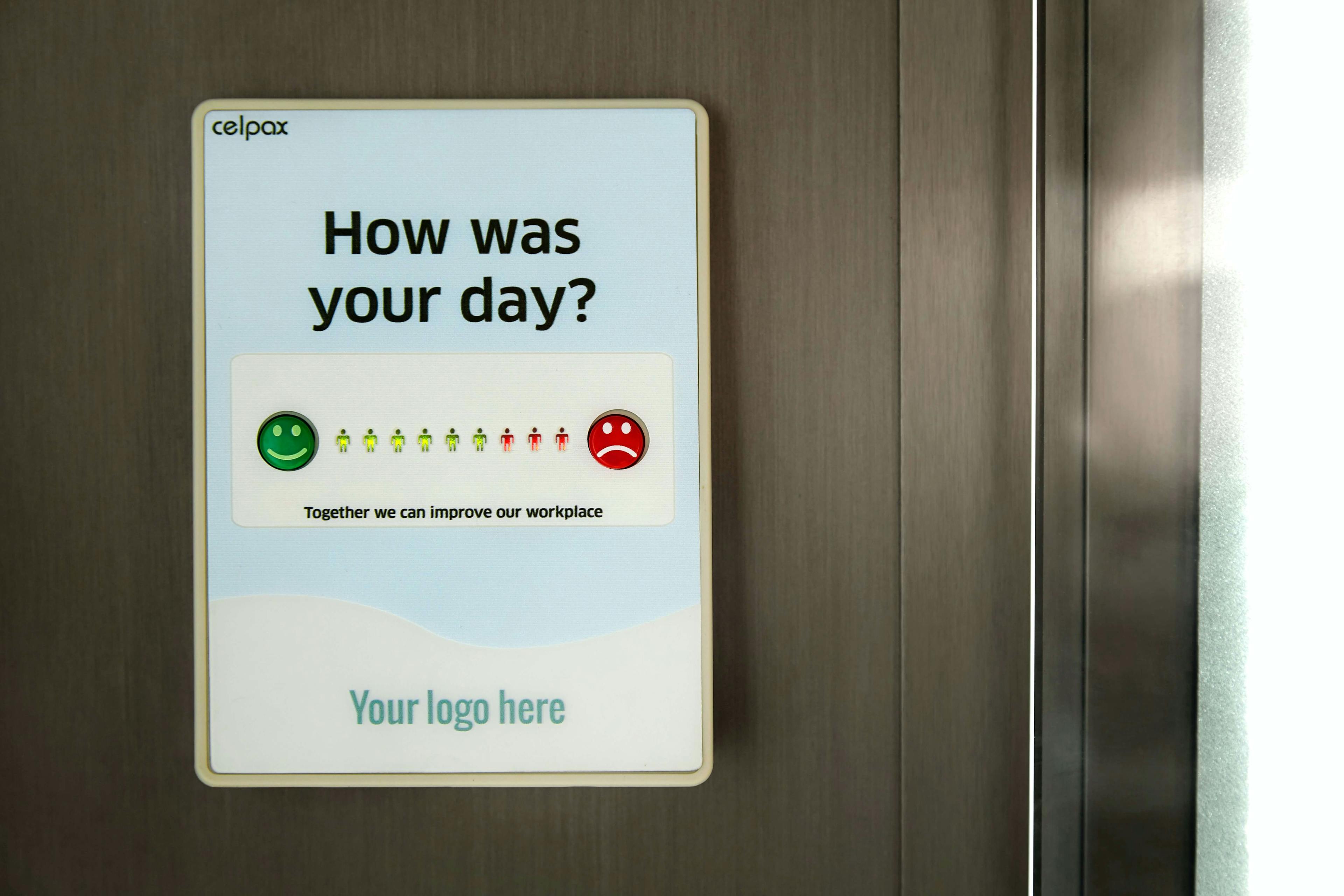The end-of-year review is often seen as a stressful time by employees and managers alike, a tense period of potential friction between those who might react poorly to negative feedback, and those who are unable to express themselves constructively.
In fact, according to Gallup, only 14% of employees strongly agree their performance reviews inspire them to improve. That’s an incredibly low number and one that might make you question whether it’s worth spending the time and money to do them at all.
But it doesn’t have to be this way!
Year-end reviews offer so much value when carried out correctly-clearly highlighting strengths and weaknesses, keeping the team informed about what is expected of them, and boosting employee engagement.
In this article, we’re going to find out how to get the end-of-year performance review right, looking at it from both an employee’s and a manager’s perspective. We’ll learn what an end-of-year review is and why it’s so important, talk about some things that you’ll need to include, and provide some tips that are useful for managers and employees alike.
Ready? Let’s jump straight into it.
What is an end-of-year review?
An end-of-year review, which can also be referred to as an employee performance review, annual evaluation, or employee appraisal, is simply an annual assessment of an employee’s overall work performance throughout the year.
It helps to identify areas that the employee excelled in, where they could use some improvement, set new goals for the year ahead, and provide general feedback from both sides.
Employees are often encouraged to complete their own self-evaluation as part of the process, increasing their own engagement and allowing them to highlight what they feel are their own strengths and weaknesses, achievements, or shortcomings.
The end-of-year review should be a two-way street, something that contributes to the professional development of the individual and the company as a whole, as well as building and maintaining relationships between management and employees. Seen from this holistic and inclusive process, you can already start to feel those stress levels coming down.
Why is it so important to get your year-end review right?
As we’ve already touched upon, there is plenty of evidence that end-of-year reviews are currently not living up to expectations, with the aforementioned Gallup study suggesting that year-end reviews in most organizations are so bad that they actually end up doing more harm than good.
There are plenty of reasons for this, including the lack of additional, supporting feedback throughout the year (leading to potentially unpleasant surprises), and managers who are poorly-trained in giving constructive feedback and mapping career development pathways.
Younger workers are especially dissatisfied with the current state of things. One study found that 69% of millennials believe that the process is flawed, and more than half having reacted to a year-end review by looking for a new job, complaining to coworkers, cursing, or crying.
What does all this tell us? Well, if you want to avoid spending valuable company time and resources on something that ends up making half of your team angry and upset, you’d better make sure you get your end-of-year review right.
Because out of these same young employees, 70% still feel confident that an end-of-year review can help them to learn and grow if carried out effectively.
So without further ado, let’s look at some best practices for making your end-of-year review a success!
What to include in your end-of-year review?
If you’ve been tasked with writing an end-of-year review, whether you’re an employee doing a self-evaluation or a manager evaluating others, it can be difficult to know where to start. Include the following in your plan to create a positive and actionable mindset:
Achievements: Always start off on the front foot. Both managers and employees should keep a track of achievements throughout the year, and have them ready to discuss during your meeting.
Everyday tasks: What does a typical day look like? Discussing this can highlight responsibilities, efficiency, time spent on various tasks, and whether the employee is achieving a satisfactory work/life balance.
Growth opportunities: Rather than phrasing things in a critical way, consider looking at any potential shortcomings as potential areas of growth instead. This opens the door for honest feedback with the emphasis on improvement and opportunity, rather than blame or accusation.
Company requirements: This is the time to compare the goals of the company with the performance of the employee, discussing how the employee contributes to overall success, outlining company strategy, and talking about any upcoming changes in organization/structure, etc.
Strengths: Finishing the meeting positively, talking about an employee’s strengths and the value that they bring to the company, will lead to a feeling that goals can be accomplished and the employee is appreciated for the work that they do.
Tips for managers
1. Follow up with regular feedback throughout the year
A year-end review should not end after one meeting. Unfortunately, many companies simply hold a single, stressful annual performance review and believe that the job is done, neglecting to follow up and making little effort to initiate engagement throughout the rest of the year.
This is a big mistake because employees like to know how they are doing at work. People are always going to feel happier working in an organization that takes the time to ask their opinions, and regular checkups increase focus while providing security and reassurance that they are on the right track. This is reflected in the numbers, with 65% of employees saying that they would like more feedback and engagement in their workplace.
Use your end-of-year review as the basis for more regular feedback throughout the year. This can be done informally, through a short ‘well done’ email to recognize when set goals have been achieved, or in a more formal, planned way through employee pulse surveys. These are usually held monthly or quarterly and consist of 5-15 questions. Pulse surveys are great because they are short, sharp, and allow you to measure changes as the year progresses.
2. Keep feedback focused and collaborative
Choose a limited amount of specific points or themes to really focus on. Overwhelming employees with a lot of general, unfocused feedback will only cause confusion and stress as they try to process it all, so find your priority points and stick to them.
You can make things clearer for the employee by making sure that your feedback is solutions-oriented. For example, let’s say that you’ve identified missing deadlines as a priority point. Rather than saying something like “you work too slowly,” it’s better to say “let’s look at your time management and find areas where we can increase your efficiency.”
This kind of focused feedback, with a strong emphasis on collaboration and growth, leaves the employee with a clear sense of their priorities, as well as the guidance and support to improve them.
3. Set goals
Year-end reviews are a great time to set new challenges for the coming 12 months. Goal-setting should always be a collaborative effort, so set aside some time for a discussion that encompasses company requirements and expectations, as well as the individual capabilities and aims of the employee.
Make sure that goals are clearly defined, realistic, and achievable, and leave the employee positive and excited for the challenges ahead. Goals should also be measurable, so they can be reassessed in the next year-end review and find out if they were achieved or not.
Setting goals encourages a growth mindset, but can quickly become discouraging if they are unrealistic.
4. Start and finish with positive feedback
Start your year-end review by listing all the great things that the employee has achieved in the past year.
This sets the expectations for what kind of work is valued in the company, creates an upbeat tone for the rest of the meeting, and provides important recognition of the employee’s work. According to one study, 69% of employees say they would work harder if they felt their efforts were being better recognized, so this is the perfect time for a well-deserved pat on the back!
Finish with a recap and appreciation for the employee’s positive contributions, and express support to help them in reaching their goals for the year ahead. It’s important that an employee leaves a year-end review with a clear idea of the progress they have made, the areas they need to improve, and an understanding of what they can do to make these improvements.
Tips for employees
1. Don’t be too modest
There’s nothing wrong with tooting your own horn during a year-end review-this is your chance to have all of your achievements recognized! Reflect on the positive contributions that you’ve made to the company throughout the year and bring attention to all of the goals that you’ve met.
Doing this will start your meeting on a positive note while helping managers to realize the value that you bring to the organization. It also helps in setting new goals for the year ahead by highlighting your strengths and preferences.
2. Be honest and open to constructive feedback
At the same time, don’t be afraid to talk about your weaknesses too, and highlight areas where you feel that you need to improve. Nobody is perfect, and managers will appreciate the chance to discuss areas where you can do even more to help the company.
The negative energy around criticism can be counterproductive on all sides, so being frank and accepting of your weaknesses is essential to overcoming them. Listen actively to feedback, don’t be afraid to ask questions, and take notes so you can create a plan of action.
Managers are interested in growth and improvement so don’t take constructive feedback too personally!
3. Follow up
Keep an open dialogue with managers by asking for regular follow-ups on your year-end review. Your goals can change throughout the year as a result of various external factors like restructuring or changes in personnel, so it’s important to adjust them as needed.
Ideally, employees should be able to approach managers to discuss their progress and anything else that can help to achieve their goals.
Take the initiative and ask for pro-active communication, rather than waiting for formal, one-off year-end reviews.
4. Find your career path
Use your year-end review to find out how you can progress to the next level in your organization. Ask your manager what kind of opportunities and potential openings are available further up and inquire about what is needed to get there.
This can help you set your goals with more focus, by having an end-point to reach for. Your manager will also appreciate your motivation and desire to succeed-attractive qualities for any employer.
Wrap up
It doesn’t matter whether you are initiating the year-end review or participating in it, it’s important to be prepared.
Rather than being the stressful, counterproductive, and poorly-executed experience that it so often turns out to be, with a little planning and common sense you can turn the end-of-year review into a time of growth, learning, mutual respect, and understanding that builds long-term relationships between employees and management for years to come.
If you implement some of the tips that we’ve shared in this article before your next year-end review, you’ll walk into the meeting room with a much more positive and constructive mindset!



